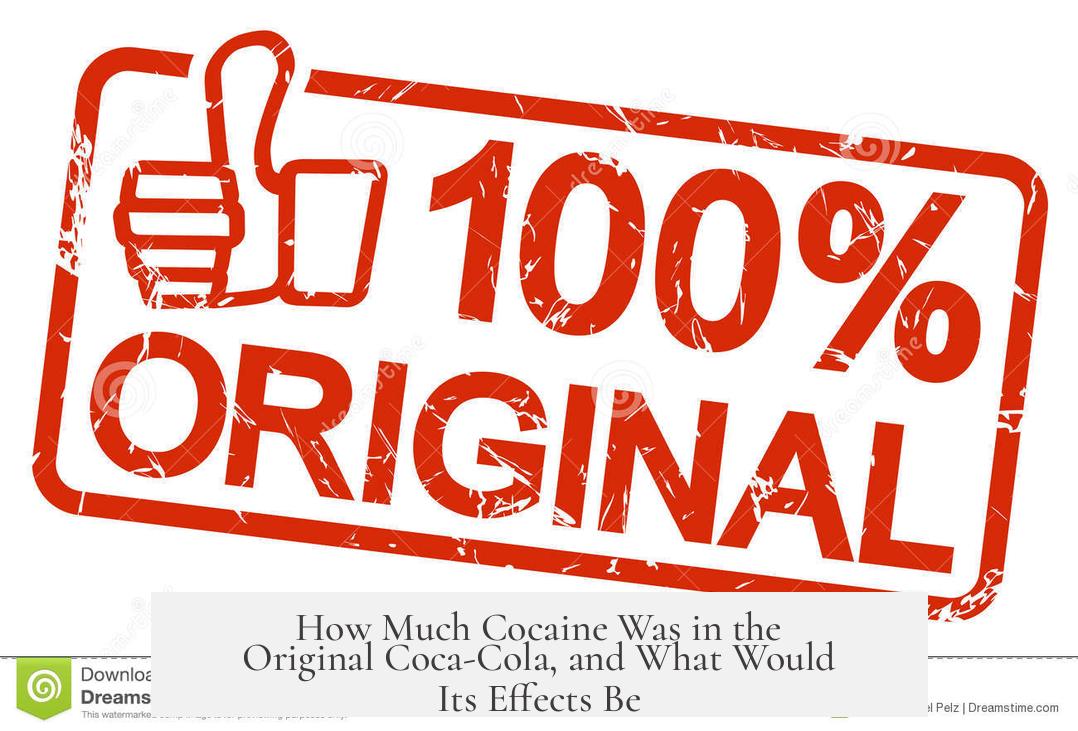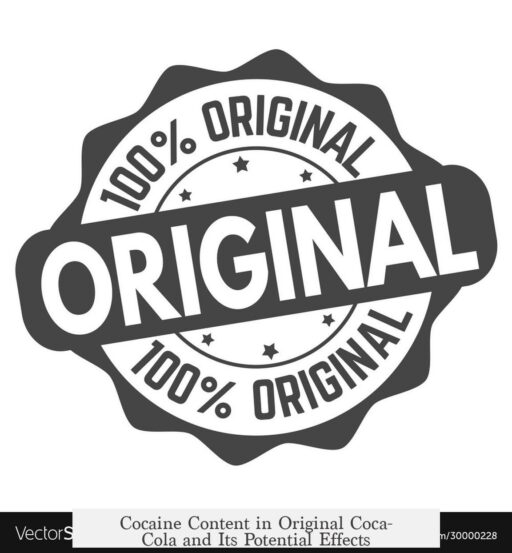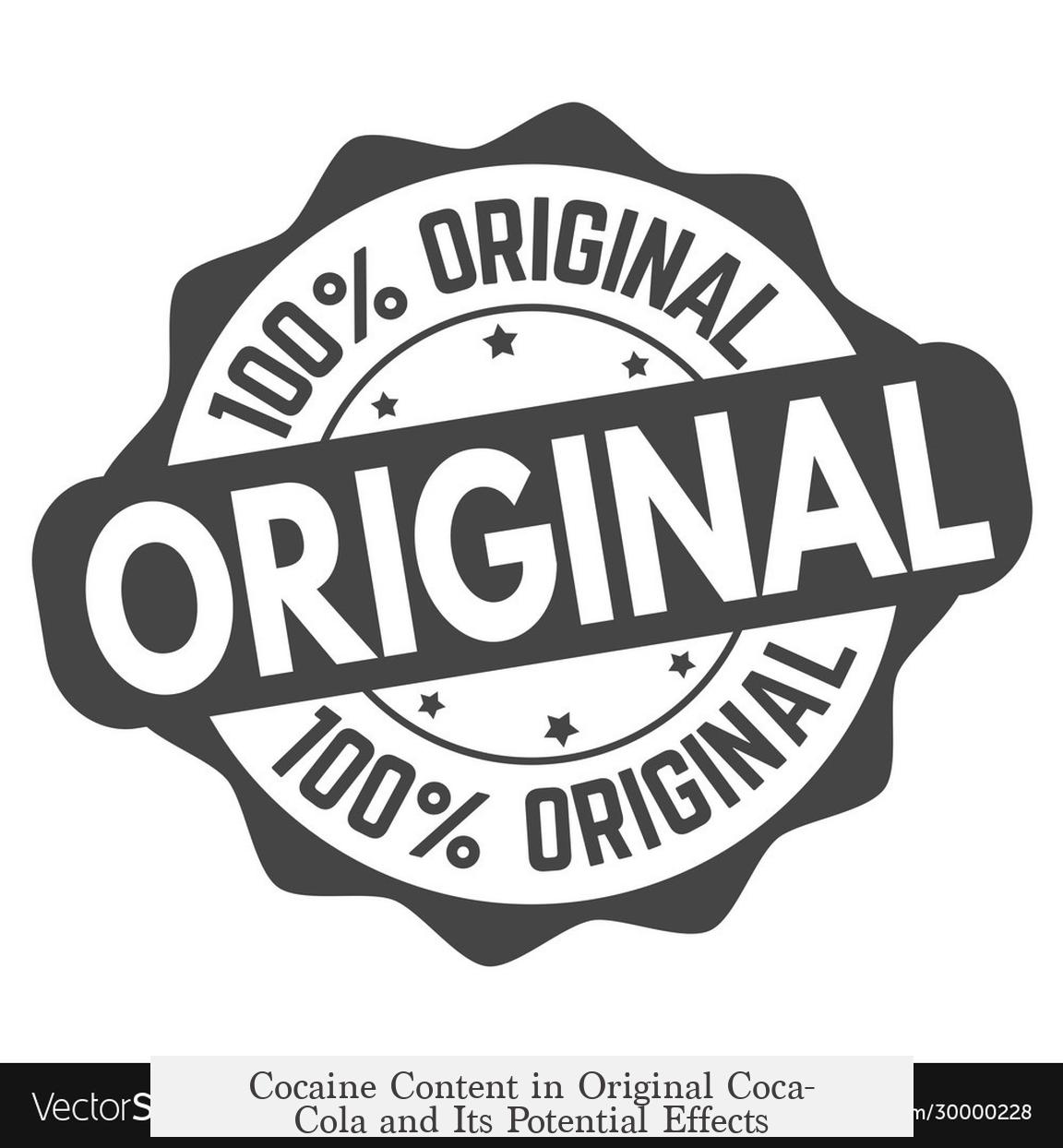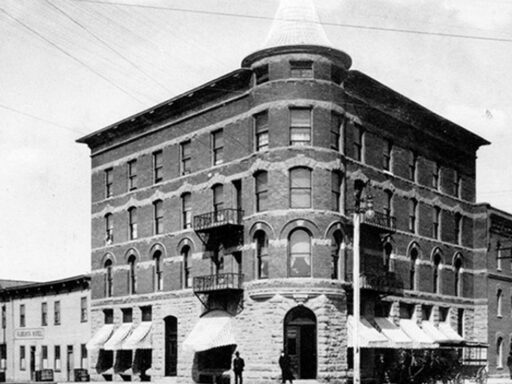The original Coca-Cola contained coca leaf extracts, not cocaine itself. While coca leaves naturally contain cocaine alkaloids, the beverage’s formula did not include pure cocaine. Due to the acidic nature of Coca-Cola and the human stomach, any cocaine-related compounds would barely produce notable effects when consumed in typical servings.
Coca-Cola’s recipe, developed in the late 19th century, used an infusion of coca leaves alongside kola nut extracts. However, the coca leaves were processed in a way that removed the cocaine alkaloid or reduced it to minimal trace amounts. Cocaine is a chemical derived from coca leaves through hydrolysis, and it requires a basic (alkaline) environment for effective absorption and activity in the body.
Because Coca-Cola is highly acidic, as is the stomach, the bioavailability of cocaine from the drink would be very low. Cocaine and related compounds degrade or fail to absorb efficiently in acidic conditions. This means that any active alkaloids remaining in the original formula would have minimal impact on the consumer.
When cocaine is ingested orally in pure form, it tends to numb the tongue and gums and may cause blood vessel constriction locally. Early drinkers of Coca-Cola might have noticed a slight numbing sensation from residual alkaloids; however, no significant psychoactive or stimulant effects comparable to direct cocaine use would occur. The beverage’s stimulant effects largely come from caffeine in kola nuts, not coca leaf compounds.
| Aspect | Details |
|---|---|
| Cocaine content | None; coca leaves used but de-cocainized or minimal alkaloids present |
| Effect from coca alkaloids | Possible mild oral numbness; no detectable psychoactive effect |
| Absorption environment | Acidic, reducing cocaine bioavailability |
| Stimulant source | Kola nut caffeine, not cocaine |
Despite myths, original Coca-Cola did not supply cocaine or similar effects commonly associated with the drug. The presence of coca leaf flavoring contributed to marketing and taste but not psychoactive stimulation. Today, Coca-Cola uses decocainized coca leaf extracts under strict regulations.
- Coca-Cola contained coca leaf extracts, not cocaine.
- Cocaine requires basic conditions for absorption, unlike Coca-Cola’s acidic formula.
- Any residual cocaine alkaloids caused minimal oral effects, no significant stimulation.
- The drink’s stimulant effects come from caffeine, not cocaine.
How Much Cocaine Was in the Original Coca-Cola, and What Would Its Effects Be?

Let’s clear the fizz right away: the original Coca-Cola contained no actual cocaine. This fact bursts a popular bubble many have heard for over a century. Instead, the drink included coca leaves, which sounds suspiciously close but chemically and legally diverged from cocaine itself. So, how close were those coca leaves to turning your soda into a mini stimulant bomb? And what would have happened if you actually consumed cocaine mixed inside your fizzy pop? Let’s dive into this flavorful history—and the science behind it!
Coca-Cola’s very first formula, dating back to 1886, did indeed use coca leaves as one of the ingredients. The catch? these leaves were not the same thing as cocaine. Cocaine is a refined chemical derived from the coca plant, and extracting it requires a specialized process called hydrolysis. Simply tossing coca leaves into a sugary syrup doesn’t magically infuse your drink with a dose of that illicit substance.
Think of it as the difference between an orange and a glass of orange juice concentrate mixed with sugar and flavoring. The whole fruit holds all the potential, but the concentrate may lose some key components during processing. Coca leaves carry cocaine alkaloids, but in crude mixtures like the original Coca-Cola syrup, the active cocaine was not present in any significant or purified amount.
On top of the chemistry, there’s the question of absorption in the body. Cocaine’s bioavailability—the ability to affect your system—depends on the environment where it enters. Here’s a fun chemistry twist: cocaine and the substances in coca leaves hate acidic environments. They actually need a basic, or alkaline, setting to properly absorb into your bloodstream.
Since both Coca-Cola and your stomach are highly acidic, any cocaine alkaloids possibly present would struggle to have much effect. The soda’s very acidic pH would neutralize or inhibit cocaine’s absorption. So even if there was a tiny bit of cocaine left in the old beverage, it wouldn’t exactly be lighting you up like a firework.
What would you notice if you did drink something with raw cocaine? The direct oral effects might include a slight numbness in your mouth and gums. Some users report a tingling sensation or minor tightening of blood vessels inside the cheeks and tongue. But as far as the original Coca-Cola goes, these effects would’ve been barely there, if at all. No euphoric rush, no jittery buzz, just maybe a faint tickle in your mouth if you really focused.
So why did Coca-Cola use coca leaves at all? Back in the late 19th century, coca leaves were known for their mild stimulant qualities and medicinal reputation. Their presence promised a tonic-like effect—a kind of “health boost” that later became more myth than reality as Coca-Cola shifted away from the leaves around 1904. The company introduced “decocainized” coca leaves by then, ensuring none of the psychoactive cocaine remained.
By the way, if you’re thirsting for hardcore chemical explanations on how cocaine breaks down and reacts inside acidic mixes, specialized scientific forums like /r/askscience have insightful discussions on these processes. But for everyday coca cola enthusiasts, knowing that the original formula didn’t contain active cocaine is usually enough to quench curiosity.
Breaking It Down: What If You Drank Coca-Cola with Cocaine?
Imagine for a moment that Coca-Cola back in the day did contain significant amounts of cocaine. What would that actually feel like? Cocaine taken orally primarily causes mouth numbness and minor local effects, far different from the rapid “rush” seen when it’s snorted or injected.
With an acidic drink like Coke, which is carbonated and contains phosphoric acid, the environment disrupts cocaine molecules, limiting their power. So, while some minor sensations might occur, significant psychoactive effects—like euphoria or alertness—would be highly unlikely. Your head probably wouldn’t spin, and you wouldn’t be bouncing off the walls after sipping a soda.
Drinking large quantities might edge closer to detectable effects, but consider this: original Coca-Cola was not designed as a dosing vehicle for cocaine. The formula was balanced for flavor, not for pumping stimulants into your veins. Its stickiness, sweetness, and acidity do not promote cocaine absorption. In fact, under these conditions, consuming even significant amounts might just upset your stomach before any buzz kicks in.
What Can Modern Soda Drinkers Learn?
Well, first, it’s a reminder to question sensational histories! Yes, the name “coca” in Coca-Cola evokes the coca plant, but it has never contained actual cocaine powder or any illicit drug in the modern era. Second, chemistry plays a vital role in how substances affect us. Even a potent drug like cocaine can be neutralized or rendered ineffective by acidic settings, demonstrating how complex and fascinating our bodies and food chemistry really are.
For curious minds, this story also highlights how marketing and ingredients evolve. Coca-Cola shifted over time to meet legal regulations and changing public tastes, removing coca leaves entirely from their recipe by the early 20th century. The myth of cocaine-laced Coke endures mostly for its sensationalism rather than scientific accuracy.
If you ever want a caffeine kick today, your safe bet is classic Coca-Cola, not a shot of old-school amphetamines. So next time you sip some cola, remember: you’re drinking a fizzy mix of caramel color, sugar, caffeine, and secret flavors—not street-level stimulants. Safe, tasty, and historically intriguing!
Summary:
- Original Coca-Cola used coca leaves, not cocaine.
- Cocaine is a hydrolyzed, purified product of coca leaves, not present in the syrup.
- Acidic environment in soda and stomach prevents cocaine’s effective absorption.
- Likely effects included minor mouth numbness or vasoconstriction, but no psychoactive impact.
- For those craving chemical deep-dives, scientific forums are your go-to resource.
So, no, the original Coca-Cola won’t make you buzz like a stimulant monster. That’s a myth fizzing out in the annals of history. But it sure makes for a fascinating story every time you crack open a cold one.



